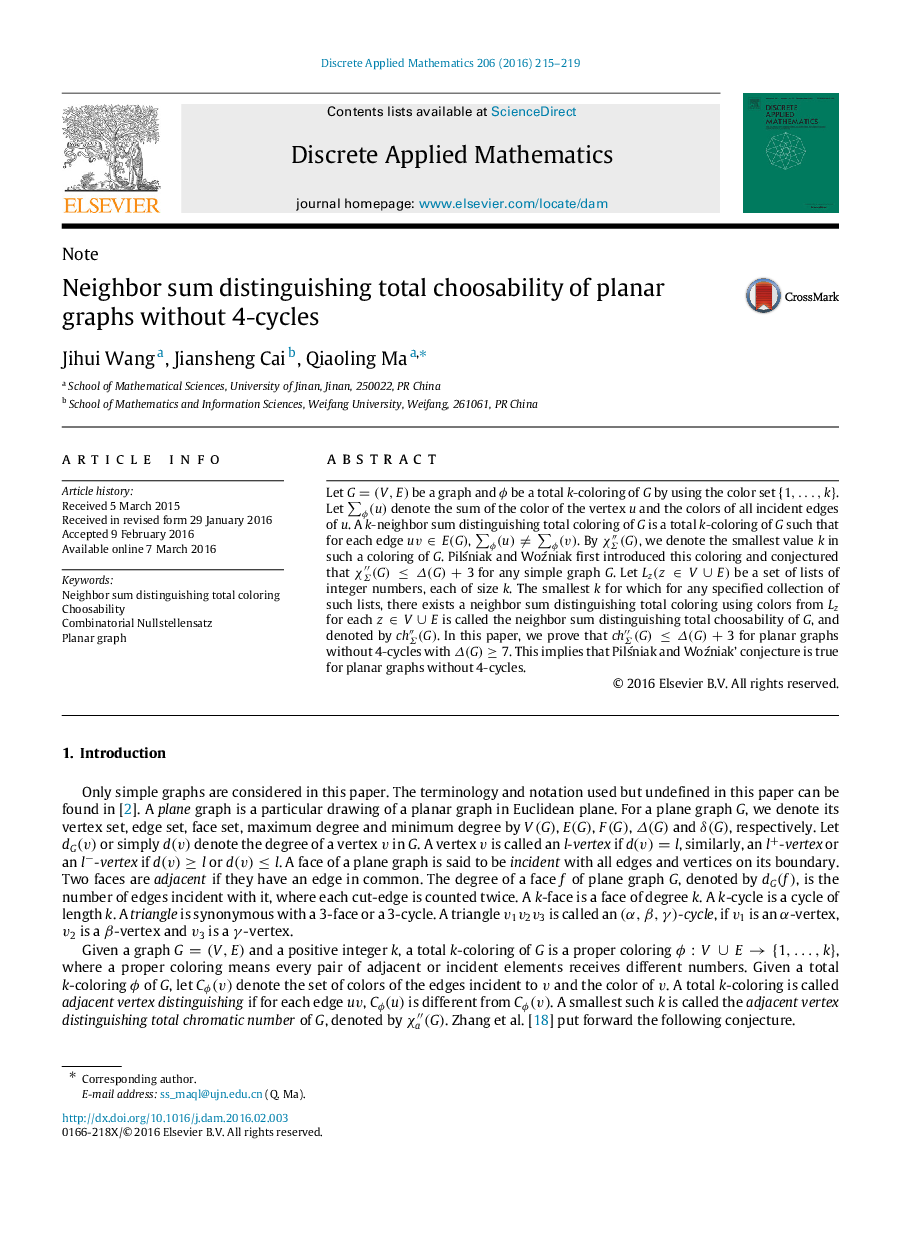| Article ID | Journal | Published Year | Pages | File Type |
|---|---|---|---|---|
| 418521 | Discrete Applied Mathematics | 2016 | 5 Pages |
Let G=(V,E)G=(V,E) be a graph and ϕϕ be a total kk-coloring of GG by using the color set {1,…,k}{1,…,k}. Let ∑ϕ(u)∑ϕ(u) denote the sum of the color of the vertex uu and the colors of all incident edges of uu. A kk-neighbor sum distinguishing total coloring of GG is a total kk-coloring of GG such that for each edge uv∈E(G)uv∈E(G), ∑ϕ(u)≠∑ϕ(v)∑ϕ(u)≠∑ϕ(v). By χΣ″(G), we denote the smallest value kk in such a coloring of GG. Pilśniak and Woźniak first introduced this coloring and conjectured that χΣ″(G)≤Δ(G)+3 for any simple graph GG. Let Lz(z∈V∪E)Lz(z∈V∪E) be a set of lists of integer numbers, each of size kk. The smallest kk for which for any specified collection of such lists, there exists a neighbor sum distinguishing total coloring using colors from LzLz for each z∈V∪Ez∈V∪E is called the neighbor sum distinguishing total choosability of GG, and denoted by chΣ″(G). In this paper, we prove that chΣ″(G)≤Δ(G)+3 for planar graphs without 4-cycles with Δ(G)≥7Δ(G)≥7. This implies that Pilśniak and Woźniak’ conjecture is true for planar graphs without 4-cycles.
